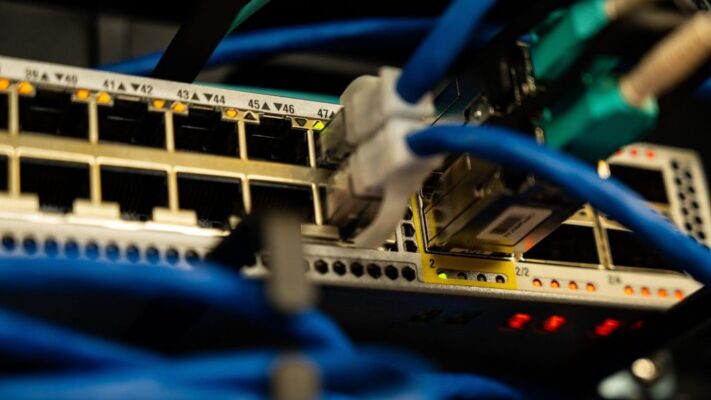
Networks today are fundamental for supporting organizations, giving correspondence, even in entertainment field—the rundown continues forever. An essential feature networks share practically speaking is the network switch, which serves the purpose of sharing assets. Network switch is a fundamental segment of business organization to associate Ethernet links from various gadgets together. Aside from network switch, hub and router are all PC connecting gadgets with changing attributes and frequently utilized by certain specialists. So, would they say they are exactly the same thing or do they work essentially the same way? In this article we will talk about what is exactly a network switch and how does a network switch work.
What is a network switch?
A network switch is a gadget that works at the Data Link layer of the OSI model—Layer 2. It takes in parcels being sent by gadgets that are associated with its actual ports and sends them out once more, yet just through the ports that lead to the gadgets which are expected to reach. They can likewise work at the network layer- – Layer 3 where routing happens.
Switches are a typical segment of networks dependent on ethernet, Fiber Channel, Asynchronous Transfer Mode (ATM), and InfiniBand, among others. Usually however, most switches today use ethernet.
Various models of network switch support different quantities of associated devices. Consumer grade network switch gives either four or eight association for Ethernet gadgets, while corporate network switch normally upholds somewhere in the range of 32 and 128 devices. Also, network switches can be furthermore connected with one another that is viewed as a daisy-chaining strategy to add an even bigger number of gadgets to a LAN.
Daisy Chaining Switches
On the off chance that a network switch needs more ports for your whole organization, you can link switches by daisy-tying them. On most switches, it doesn’t make any difference which port you use to daisy chain to another switch. Simply pick a port on the two switches and use a cable to connect to one another by means of these ports. Also, if your switch has ports with varying speeds, utilize the quickest ports to interface the changes to each other.
Also Check Out : Cisco Support Services
Stacking Network Switches
Some network switches, called stackable switches, can be extended by adding extra switch modules that add extra ports to the switch. The extra modules might be as truly separate switches that are associated by means of exceptional interconnected ports, or they might be modules that can be embedded into a bigger body.
Stackable switches are naturally managed switches, and the characterizing trait for a stackable switch is that every one of the switches associated together into a solitary stack are managed as though they’re a solitary network switch.
Unmanaged and Managed Network Switches
Unmanaged switch, a kind of plug and play Ethernet network switch, is commonly intended for basic necessity. Since unmanaged switch requires no arrangement by any means, it is normal utilized in home organizations or any place a couple of ports are required.
While on the other side of the coin, managed network switch can be arranged and appropriately figured out how to offer a more custom-made insight. It will typically bear the heaviness of exhaustive capacities for a network. Managed network switch is regularly applied in the centre layer in a network, particularly in enormous and complex server farms.
How does a network switch work?
When a gadget is associated with a switch, the switch takes note of its media access control (MAC) address, a code that is heated into the gadget’s network interface card (NIC) that appends to an ethernet link that connects to the switch. The switch utilizes the MAC address to distinguish which appended gadget active parcels are being sent from and where to convey approaching bundles.
So, the MAC address recognizes the actual gadget instead of the network (Layer 3) IP address, which can be appointed powerfully to a gadget and change over the long haul.
At the point when a gadget sends a bundle to another gadget, it enters the switch and the switch peruses its header to figure out how to manage it. It coordinates with the objective location or addresses and sends the bundle out through the proper ports that prompts the designated gadgets. To diminish the opportunity for impacts between network traffic going to and from a switch and an associated gadget simultaneously, most switches offer full-duplex functionality in which parcels coming from and going to a gadget approach the full data transfer capacity of the switch association.